The ARM vs x86 Wars Have Begun: In-Depth Power Analysis of Atom, Krait & Cortex A15
by Anand Lal Shimpi on January 4, 2013 7:32 AM EST- Posted in
- Tablets
- Intel
- Samsung
- Arm
- Cortex A15
- Smartphones
- Mobile
- SoCs
What's Next? ARM's Cortex A15
Comparing to Qualcomm's APQ8060A gives us a much better idea of how Atom fares in the modern world. Like Intel, Qualcomm appears to prioritize single threaded performance and builds its SoCs on a leading edge LP process. If this were the middle of 2012, the Qualcomm comparison is where we'd stop however this is a new year and there's a new kid in town: ARM's Cortex A15.
We've already looked at Cortex A15 performance and found it to be astounding. While Intel's 5-year old Atom core can still outperform most of the other ARM based designs on the market, the Cortex A15 easily outperforms it. But at what power cost?
To find out, we looked at a Google Nexus 10 featuring a Samsung Exynos 5250 SoC. The 5250 (aka Exynos 5 Dual) features two ARM Cortex A15s running at up to 1.7GHz, coupled with an ARM Mali-T604 GPU. The testing methodology remains identical.
Idle Power
As the Exynos 5250 isn't running Windows RT, we don't need to go through the same song and dance to wait for live tiles to stop animating. The Android home screen is static to begin with, all swings in power consumption have more to do with WiFi at this point:
At idle, the Nexus 10 platform uses more power than any of the other tablets. This shouldn't be too surprising as the display requires much more power, I don't think we can draw any conclusions about the SoC just yet. But just to be sure, let's look at power delivery to the 5250's CPU and GPU blocks themselves:
Ah the wonderful world of power gating. Despite having much more power hungry CPU cores, when they're doing nothing the ARM Cortex A15 looks no different than Atom or even Krait.
Mali-T604 looks excellent here. With virtually nothing happening on the display the GPU doesn't have a lot of work to do to begin with, I believe we're also seeing some of the benefits of Samsung's 32nm LP (HK+MG) process.
Remove WiFi from the equation and things remain fairly similar, total platform power is high thanks to a more power hungry display but at the SoC level idle power consumption is competitive. The GPU power consumption continues to be amazing, although it's possible that Samsung simply doesn't dangle as much off of the GPU power rail as the competitors.


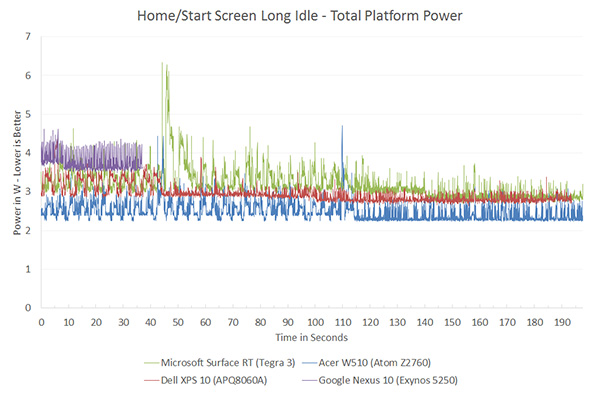
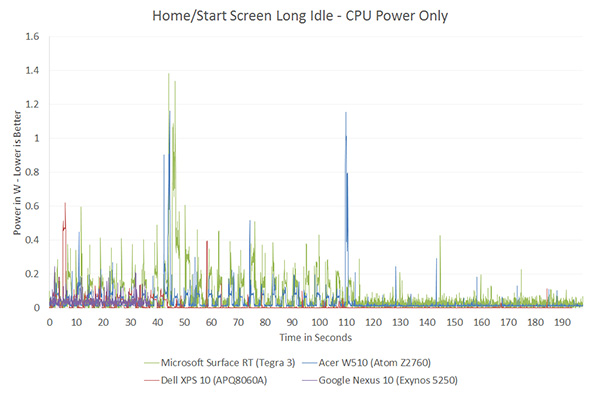
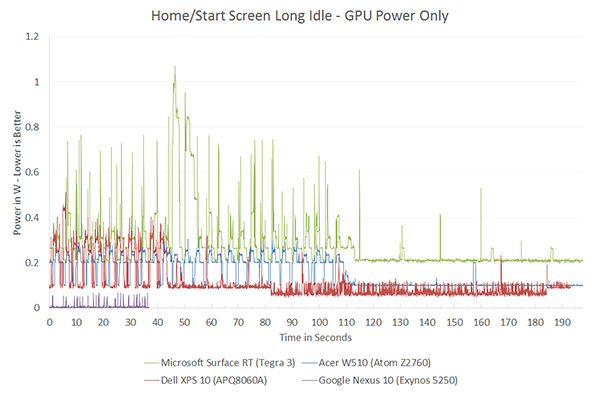
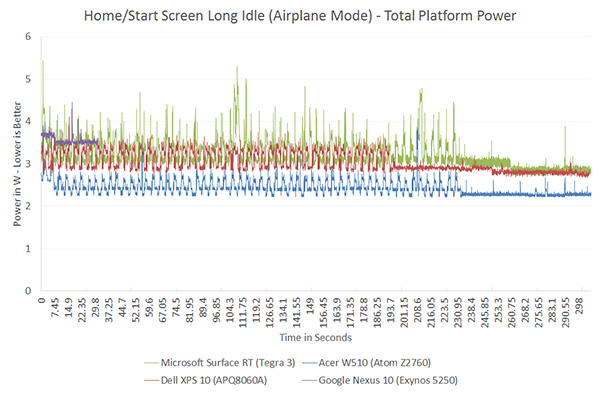
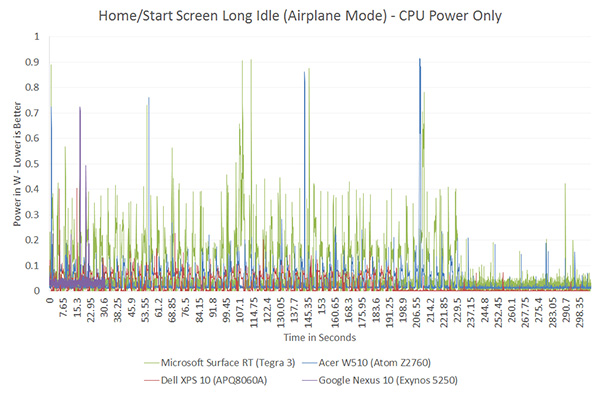
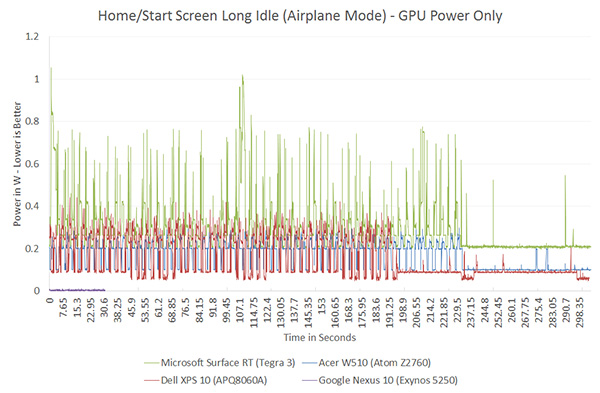








140 Comments
View All Comments
gryer7421 - Friday, January 4, 2013 - link
aaaand then looses where it matters, the rest of the platform. one more process shrink and both will be on even terms in cpu power usage and then as a whole platform will start punching arm in the face.Wolfpup - Friday, January 4, 2013 - link
Huh? Did you read the article? Atom built on 32nm is competitive with ARM built on 28nm. Not only that, but it's looking like Haswell will realistically be able to compete here too, and we've got the second gen Atom coming up this year too...but TODAY'S Atom at an older process is competitive with ARM...what you're claiming is exactly the opposite of what the article says.JumpingJack - Friday, January 4, 2013 - link
I don't think we are looking at the same data, overall Atom appears to uses the same or less power than Krait and offers better performance in general.Homeles - Friday, January 4, 2013 - link
"Anyone with half a brain" would read the article before making such an idiotic statement.Rezurecta - Saturday, January 5, 2013 - link
wow. Way to belittle Anand's hard work...Great article! One of the many reasons I love this site. :)
Death666Angel - Friday, January 4, 2013 - link
The Star Wars theme to play in my head! Thanks for that! :DDeath666Angel - Friday, January 4, 2013 - link
"I wonder what an 8W Haswell would look like in a similar situation."Me too. However, considering that they 17W ULV parts only reach those numbers by throttling as well, I don't expect a lot.
carancho - Friday, January 4, 2013 - link
Amazing work. Congratulations! A couple of presentation suggestions:Next time please smooth some of the most important charts. The volatility makes it hard to see where the averages are. Take this chart: http://images.anandtech.com/reviews/SoC/Intel/CTvK... it could really benefit to have another copy with some additional smoothing.
Also, in power charts like this http://images.anandtech.com/reviews/SoC/Intel/CTvK... it would be helpful to have as a summary followup chart the power calculation done and presented as bar charts; otherwise we have to resort to calculate the differences in the areas below the lines with our eyes, and they can be deceiving.
carancho - Friday, January 4, 2013 - link
I hadn't reached the A15 part yet when writing this. Ignore the 2nd comment.amorlock - Friday, January 4, 2013 - link
I'm frankly amazed and impressed that Intel can get Haswell down to 8W but it's hard to imagine it in a mid range mobile device because of the likely unit cost. The reason Atom has stagnated until recently is because Intel doesn't want to create a chip that cuts into it's very profitable mainstream CPU market.